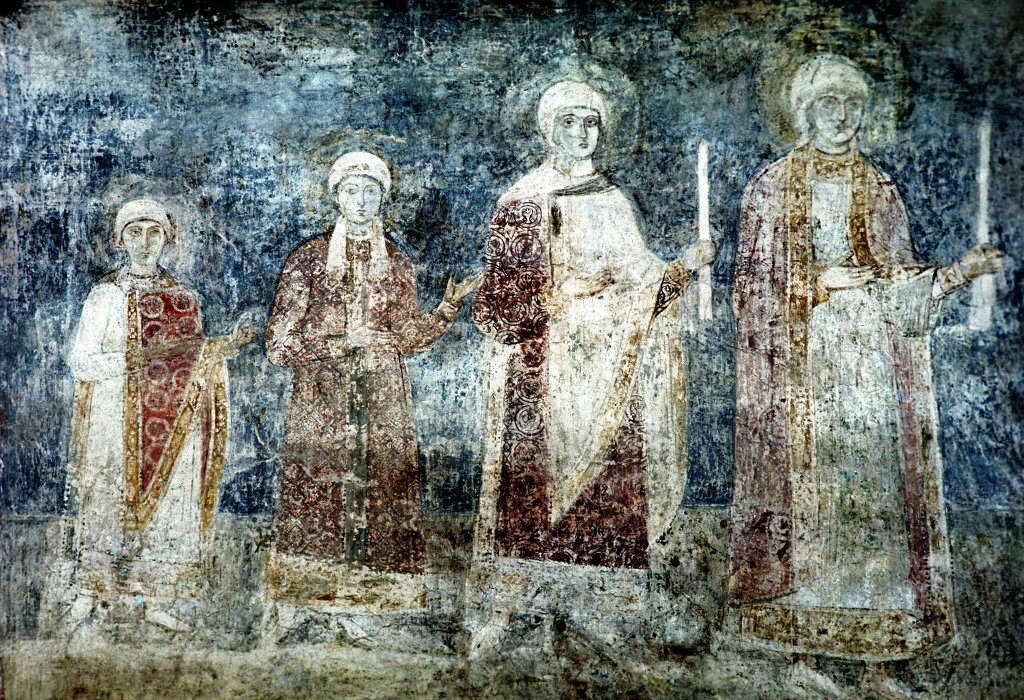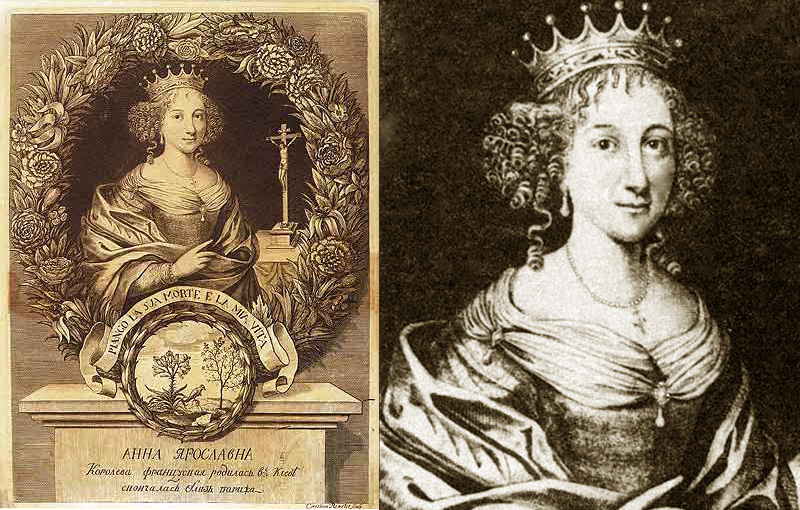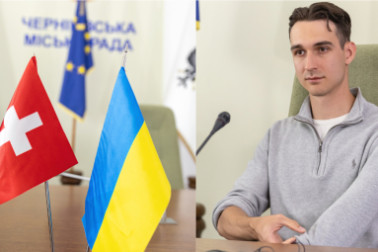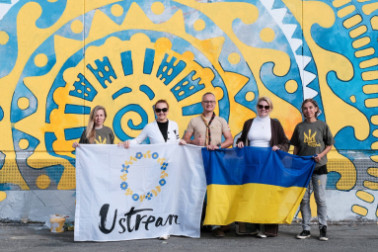Yaroslav the Wise, the famous and powerful king of Kyiv Rus`, had three daughters: Elizabeth, Anastacia, and Anna. All three girls were destined to become queens: they married kings and ascended to the thrones of different European countries. One of them was Anna Yaroslavna – the beautiful and intelligent wife of French king Henry I, the queen of France, who introduced many positive changes into the life and culture of French people.
Anna Yaroslavna was the youngest daughter of Yaroslav and his wife Ingegerd. According to different historic sources, she was born in 1032 or 1036. Anna was also known under the names Anne of Kyiv, Anna of Rus, and Agnes de Russie (in France).
Anna spent her childhood in the atmosphere of cultural flowering in Kyiv Rus`. She studied in the king`s court, where she learned reading, writing, history, mathematics, and arts. Anna was fluent in several languages including Old Slavonic, Greek, and Latin; she could write in Cyrillic and Glagolitic scripts.
In the middle of the XI century, Henry I, the king of France, became a widower for the second time. The ruler was already not a young person and it was hard for him to hold the reins of power over the country. Henry wanted to strengthen the prestige of France through matrimonial linkage with a mighty state. The king was aware of the power of Kyiv Rus`, so he was hoping that its military and financial resources could help him to fight against enemies and to unite his country, which in that period was separated into many fiefdoms. Besides, Henry, I heard numerous stories about the beauty, wisdom, and intelligence of the young Kyiv princess. The king decided that marrying Anna Yaroslavna would be the best choice, especially considering that all the princesses in the neighboring countries were in a blood relation with the king, and the Church was against incestuous marriages.
Fresco in St. Sophia`s Cathedral, showing daughters of Yaroslav the Wise (supposedly Anna is the youngest one)
But it turned out that it was not so easy for the French king to marry young Anna. The first marriage proposal of Henry I to the Kyiv princess was declined. The king did not want to give up, so he proposed to Anna again, and in 1048 finally received a positive response from Yaroslav the Wise. Anna came to France, and Henry I met her with honors in the French city of Reims. The wedding ceremony took place in Reims cathedral in 1051. On the day of marriage, Anna expressed her strong will and principles: she insisted that she was ready to swear allegiance to France only on Slavic Gospel. This book had been left in the cathedral, and with time it became known as the famous Reims Gospel, used by all French kings during their oath of allegiance ceremonies.
In such a way, Anna Yaroslavna has become the queen of France. The new queen quickly learned the French language and gained popularity among the French people. However, Anna was terrified by the traditions and regular life customs of her new homeland. The first thing that surprised the princess was the fact that during the wedding ceremony her husband Henry I just drew a cross on the documents instead of putting a signature. It turned out that the French king was illiterate! In that period of history, only religious clerics in France were educated and could read and write. Moreover, there was not a single literate woman in the whole of Paris! 
Princess Anna leaves for France to marry Henry I
There were even more horrible discoveries to find out. Anna Yaroslavna got to know that French people did not wash themselves or take a bath. They just washed their hands and face, while washing their whole body was considered a sin. Paris was a small dirty city without canalization and water installations. Citizens outpoured sewage right into the streets!
Anna has made a revolution in the French court. In her homeland in Rus`, people regularly visited bathhouses, and the queen was sure that it was important to keep clean both soul and body. Anna taught French people to use bathhouses. She has also introduced using of a fork at the table – before Anna arrived in Paris, people there had eaten food using their hands even in the king`s court!
Intelligent and well-educated Anna quickly became an important person in political games. Impressed by her wisdom, King Henry I made her his co-ruler. She signed important political documents together with her husband, which was a unique case for that time. Besides, Anna was the only woman in Europe, who had exchanged letters with Pope Nicholas II. For medieval France, this fact was a real sensation.
Kyiv princess initiated the construction of many schools, libraries, and churches; she greatly contributed to the Christian education of French people.
The young queen was highly appreciated in the court as well as by regular Paris dwellers. She taught French courtiers reading and writing. People loved Anna for her kindness, patience, and ability to get along with everyone.
Anna Yaroslavna gave birth to four children of King Henry I: three sons (Philip, Robert, and Hugh) and a daughter Emma. Philip then became the next king of France in 1052.
During the rule of Henry I and Anna, France experienced significant economic growth. The cities began to get rid of feudal serfdom, which led to the successful development of commodity and money relations. Taxes from the cities began to bring profit to the state which contributed to the further consolidation of France. The country has also established diplomatic connections with many other states.
The king was very concerned about uniting French lands, so he was often busy with eastward expansion. While the king went to war, Anna was spending time with her children and ruled the country.
To strengthen his power and avoid intestine strikes, old Henry I, who had been ruling France for almost 30 years, decided to pass the throne to his son Philip. On May 23, 1059, 9-year-old Philip was crowned and officially became the king of France. A year, in August 1060, King Henry I suddenly died of a heart attack, so Anna Yaroslavna became a widow at the age of 28.
After the death of the king, Anna left the court, but as a trustee of the young Philip, she still had to sign official documents together with her son.
In 1062, Anna married Count Ralph IV of Valois, one of the most authoritative French noblemen, who even left his first wife Eleanor for Anna. However, this marriage was invalidated.
The last mention of Anna Yaroslavna was found in the document signed in 1075. The information about her further life is unknown.
At the end of the XVII century, the grave of Anna was found in the church near Etampes in France. The Latin inscription on the grave says: “Hic jacet Domina Agnes uxor quondam Henrici Regis, Eorum per misericordiam Dei requiscant in pace” (“Here lays lady Anna, the widow of King Henry”).
Photo source: stuki-druki.com, wikipedia.org, argumentua.com, racurs.ua







